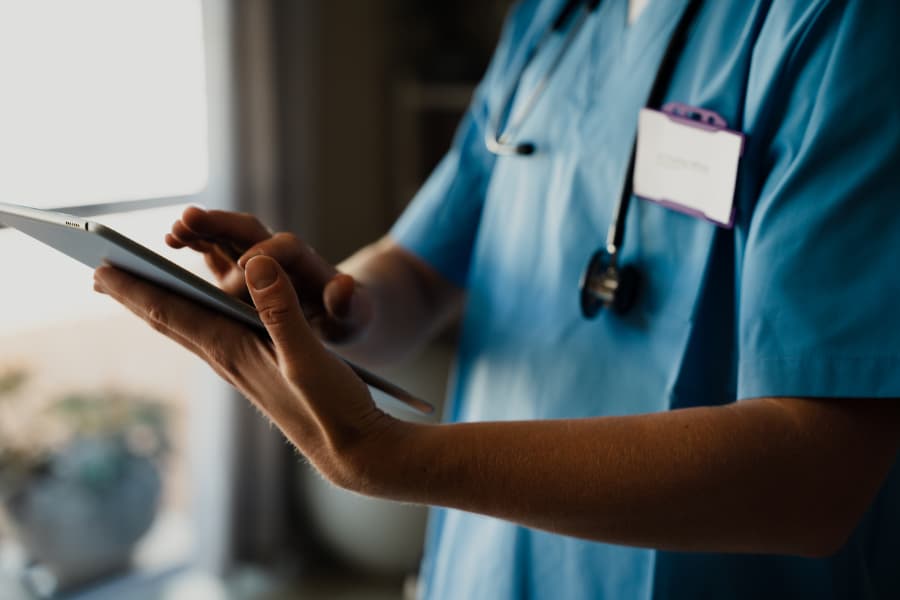 A career as a medical assistant entails a wide variety of duties, and they all employ the use of modern medical technology. Understanding the types of technology used to perform this work can help those who may be interested in the field gain a clearer understanding of the profession. Additionally, greater knowledge of this topic can help current medical assistants discover their preferred areas of interest.
A career as a medical assistant entails a wide variety of duties, and they all employ the use of modern medical technology. Understanding the types of technology used to perform this work can help those who may be interested in the field gain a clearer understanding of the profession. Additionally, greater knowledge of this topic can help current medical assistants discover their preferred areas of interest.
At Prism Career Institute, we offer comprehensive healthcare programs for our students. We offer training in Cherry Hill and West Atlantic City, NJ, as well as in Philadelphia, PA. Here, we discuss different forms of applied medical technology in medical assisting.
The Role of Applied Medical Technology
Depending on the facility, medical assistants typically split their day between performing administrative work in the front office and clinical tasks directly with patients and physicians. Both the clinical and administrative ends of this profession require proficiency in the use of computers, applications, medical tools, and other forms of applied medical technology. Many medical assistant programs, like the one at Prism Career Institute, will provide complex computer training, as well as a familiarity with laboratory and surgical equipment, to introduce commonly used technologies in the field.
With the increase of technology in today’s age, medical assistant occupations have become much more advanced. While these healthcare careers have been around for quite some time, modern technology has made medical assistants’ work much quicker and simpler. For example, medical assistants once had to fill out charts and patient information by hand. Today, these tasks can be done faster and with less human error, thanks to computers and databases that hold electronic health records (EHRs).
Technology Commonly Used by Medical Assistants
Since medical assistants tend to fulfill many roles within a single healthcare facility, the technology they use depends on their setting. The two major areas that a medical assistant can typically be found in include doctor’s offices and laboratories. There are several technological advancements found in these settings, such as the following:
Medical Assistant Office Technologies
Individuals in an office setting with applied medical technology often use common equipment such as computers, printers, fax machines, telephones, and medical databases. Medical coding career paths and medical assistants in an office setting require a clear understanding of working with software applications, as they tend to be the primary resources used for documenting, storing, and accessing patient information.
Medical Assistant Clinical Technologies
When medical assistants primarily work in clinical settings or phlebotomy career paths, a clear knowledge of laboratory machines, such as hematology analyzers, urinalysis machines, EKG machines, is required. Similarly, as with many medical assistant programs, the students studying to become professionals in this field will gain prior clinical experience working with commonly used equipment. This fosters an easier transition into the workforce after graduation.
Applied medical technology is an important part of medical careers, as it strengthens the healthcare team’s ability to perform tasks and better serve their patients. As technology progresses, professionals will be expected to evolve in their use of technological tools. For this reason, it’s important that medical assistants are always open to adaptations and willing to learn new developments as they arise. Many schools and facilities even offer workshops for current employees on up-and-coming advancements.
Become a Medical Assistant and Strengthen Your Technology Skills
Those interested in ever-changing technologies and medical concepts and how they relate to modern patient care should consider the accredited Medical Assistant Program at Prism Career Institute. Our students are thoroughly trained in the latest advancements within the field. Plus, we offer the area’s shortest pathway to graduation – the complete training program is 720 hours and spans 24 instructional weeks. In this short amount of time, students will perform direct patient care in various categories, engage in training courses focused on basic administrative tasks and skills, as well as complete a 160-hour medical assistant externship. We also teach the skills needed to adapt to future technology, so graduates can progress in their fields.
If a career in applied medical technology sparks your enthusiasm, and you are in Pennsylvania or New Jersey, consider applying at one of Prism Career Institute’s campuses. For further information regarding technology or related features in medical assistant occupations, contact us today.
